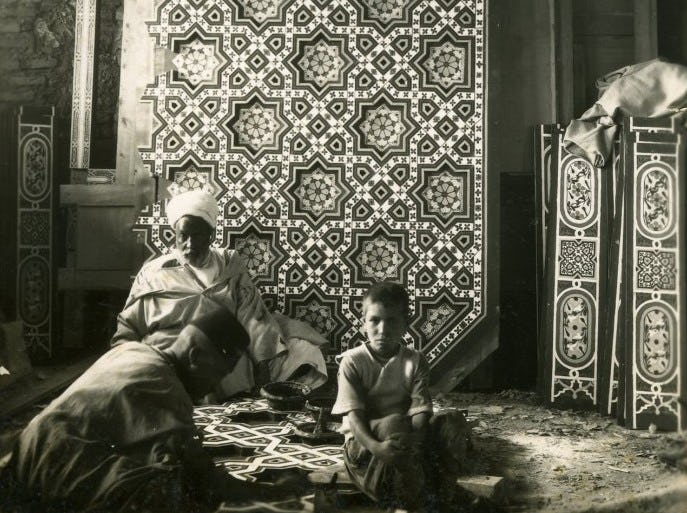Tessellated Floral Tile Panel with Çintamani Border
Date16th century
PeriodOttoman
MediumStonepaste, underglaze-painted
DimensionsOverall: 21 1/4 x 32 3/8 in. (54 x 82.2cm)
Other (each tile): 10 1/2 x 10 1/2 in. (26.7 x 26.7cm)
ClassificationsCeramics
Credit LineCourtesy of the Doris Duke Foundation for Islamic Art
Object number48.41a-b
DescriptionThis tile panel is located within the maṣab, or niche, of the Ottoman gallery. These architectural features, found in private residences of Damascus during the Ottoman period, were often composed of luxurious materials, such as ceramic tiles, marble, and mother-of-pearl. The ceramic tile is composed of cobalt blue 10- and 5-pointed stars filled with floral motifs with intertwining stems. Bright turquoise blossoms and smaller sage green polygons tessellate seamlessly with the star patterns, creating a lively and cohesive pattern. The tile panel is bordered with an alternating pattern of wavy lines and clusters of circles. This pattern, called çintamani (translated from Sanskrit as “auspicious jewel”) originated in Buddhist art. Sometimes referred to as “tiger stripes and leopard spots,” the çintamani pattern is found throughout Ottoman art, from manuscript illustration to textiles.
On View
On view16th - 17th century
18th - 19th century
16th - 17th century
17th century
c. 1580














